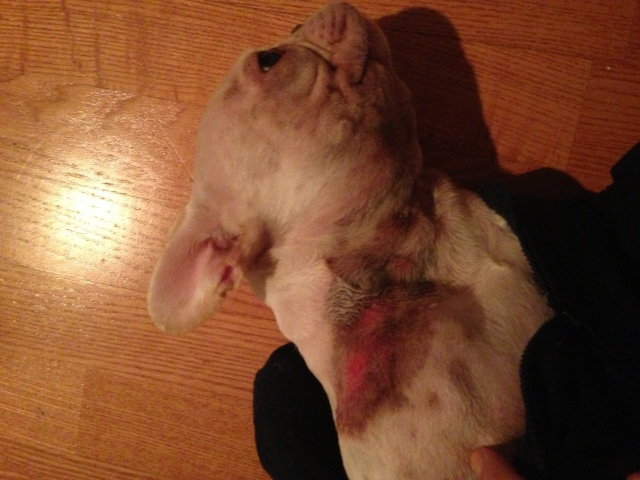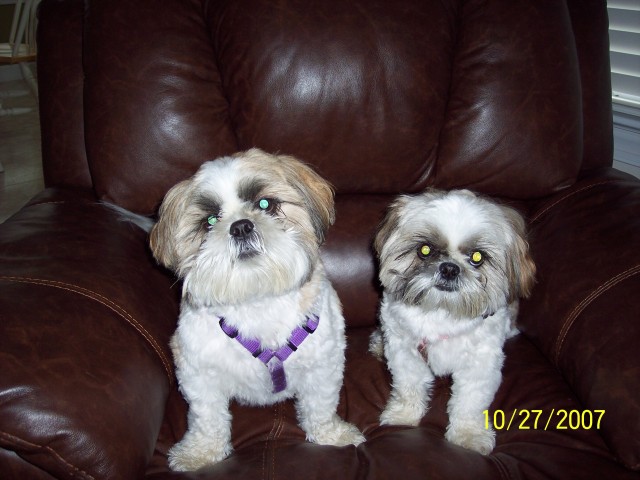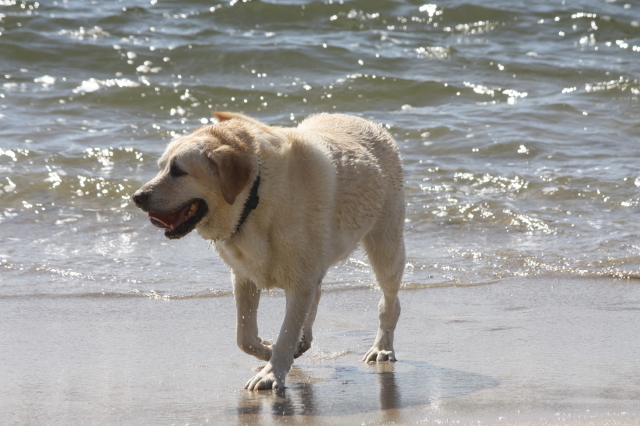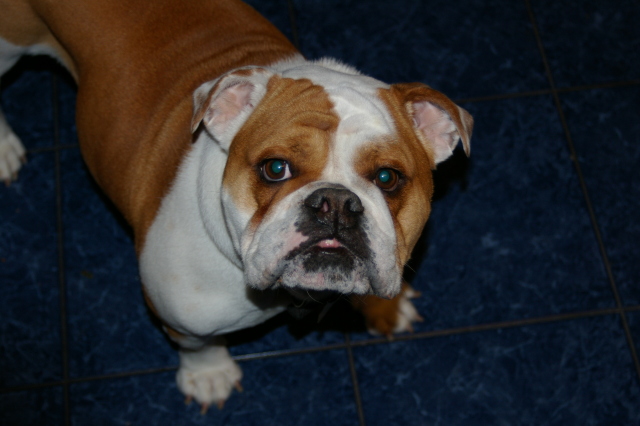QuestionHello. Blu is my Catahoula Leopard dog. He will be 4 this year and is in what appears to be good health. He weighs about 65lbs. This past Sunday 2/20 I noticed that his head felt very hot. Like he was running a temp. I decided to keep an eye on it. By Monday morning he was no longer hot, so I didn't think much of it. Suddenly today 2/22 his behavior has changed. He is very lathargic. Usually he follows us from room to room and has a lot of engery. Now all he wants to do is lay in his kennel. When you try to call him out he won't even raise his head. I have gone in and laid down with him and he rolls over for me to pet his belly. My biggest concern is today when he goes to sit down he whimpers. And when he sleeps he does grunt/groan, but he is doing it a lot more often and it seems as if he cannot get comfortable. I have felt both of his hind legs and around his rump. He doesn't whimper to the touch and I can't tell if it is hurting him. My fear is there is something going on internally. Are there certain things I should be looking for? I cannot thank you enough for your time... It is really wonderful to have a site like this.
Naomi
AnswerHello Naomi -
It sounds like your pet may have a problem with his anal glands and a possibility that he may need his anal glands expressed. The anal sacs are pouches located on either side of the anal canal, near the opening of the anus. The anus is the lower end of the digestive tract, through which solid waste (that is, bowel movement) is eliminated from the body. Glands within the anal sacs produce a foul-smelling, oily material. The oily material normally is expressed onto the bowel movement (feces) when the animal defecates. It also can be expressed when the animal becomes excited or frightened. The purpose of anal sacs is unknown. Anal sac disorders are a group of abnormalities that affect the anal sacs. The anal sacs can become overly full and distended (impacted), infected, or filled with pus (abscessed). Anal sacs are present in dogs and cats; however, dogs tend to have more problems with anal sac disorders than do cats.
The cause of anal sac disorders is unknown. Factors that may lead to anal sac disorders include chronically soft bowel movement (feces or stool), recent diarrhea, excessive anal gland secretions, or poor muscle tone of the anus. Retained anal secretions may lead to infection.
The signs depend on the type of anal sac disorder that is affecting the pet. Anal sac disorders tend to be irritating to the pet. The pet may "scoot" or rub its bottom on the floor because of itching. It may have swift and sudden bowel movements or may strain to have a bowel movement and be unsuccessful. In some cases, the pet may have a discharge from the anus or the surrounding skin. The animal may chase its tale or act differently from its usual behavior. Redness or a rash may be seen around the anus. If the animal has an anal sac abscess, it may have a fever, not feel well and be lethargic. Check for these additional signs to be sure he may have a problem with his anal glands.
I feel your pet may have an anal sac abscess. Since the duct of the anal gland is located close to the external anal sphincter contamination with fecal bacteria is common. The infection resulting from bacterialcontamination can be very painful.Signs can include excessive scooting, excessive licking, swelling, fever, and pain.
If the infection persists, the gland can rupture. Treatment includes manual expression of the gland and antibiotics. Surgical removal may be recommended to prevent additional
problems.
I recommend you make an appointment with your veterinarian to be sure. You can express the anal glands yourself but it is best left to your veterinarian. Your vet may put your pet on antibiotics, if this happens begin a regimen of Probiotics such as Acidphilus. These are good bacteria that help to support the flora (good bacteria) of the gut. Antibiotics destroy all forms of bacteria and can be more harmful then good for your pets intestinal health. You can purchase Acidophilus from your pet store or you can give your pet the "human" form. If your pet is not a pill taker you gave give him natural plain yogurt daily. Acidophilus is safe enough for everyday administration and is very effective for overall health.
You may also add Garlic powder to your pets food. Garlic is an anti-microbial and helps to fight bacteria and infection. Don't be afraid to sprinkle it with a heavy hand , dogs love Galic and he should eat it up. The only draw back to adding Garlic to your pets food is flatulence. It may be a litte stinky but the Garlic is doing its job by pushing the bacteria through the system. Just keep a couple clothes pins handy! This is also safe for and everyday regimen and will be beneficial to your pets overall health.
I am not guaranteed that the anal sac is inflammed, without a consultation I cannot make an accurate diagnosis. Please keep me posted on your pets condition and I may be able to help you with healing your pet naturally.
I hope this information hs helped you and your pet.
If you would like information on natural and herbal remedies for human and animal concerns please contact me at wintersaurora@yahoo.com and I will be happy to assist you and send you a catalog of my home made herbal remedies.
Thank you and best wishes to you and your pet.
Sincerely,
Sharon Hubbs, AHG
Certified Natural Health Consultant & Herbalist

 French bull dog with bad allergies
Question
Boo Scratch
I am Stuck In a nightmare,
French bull dog with bad allergies
Question
Boo Scratch
I am Stuck In a nightmare,
 allergies?
Question
Shih Tzu/ eye problems
My Shih Tzus are three
allergies?
Question
Shih Tzu/ eye problems
My Shih Tzus are three
 kidney failure dog/diet and homeopathy
QuestionQUESTION: since i am going to follow your advic
kidney failure dog/diet and homeopathy
QuestionQUESTION: since i am going to follow your advic
 12 year old lab w/ torn ACL; acl alternatives to sugery ; NuJoint ACL canine :
Question
Truman
Hi Marie. My sweet old timer, Tru
12 year old lab w/ torn ACL; acl alternatives to sugery ; NuJoint ACL canine :
Question
Truman
Hi Marie. My sweet old timer, Tru
 bull dog head shakes / NuVET and Vitamin E may help....
Questionjade
QUESTION: my 3 year old femal
bull dog head shakes / NuVET and Vitamin E may help....
Questionjade
QUESTION: my 3 year old femal